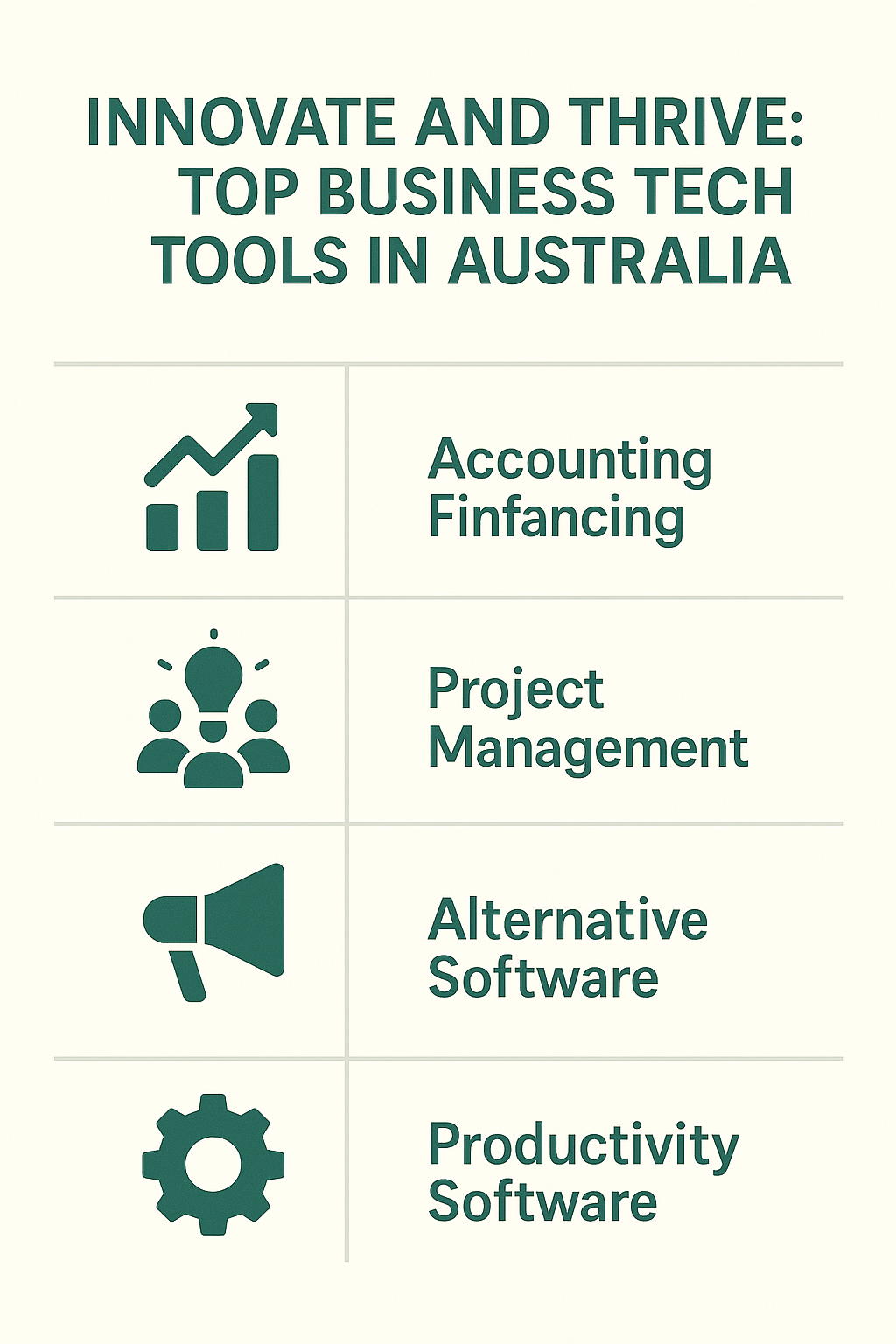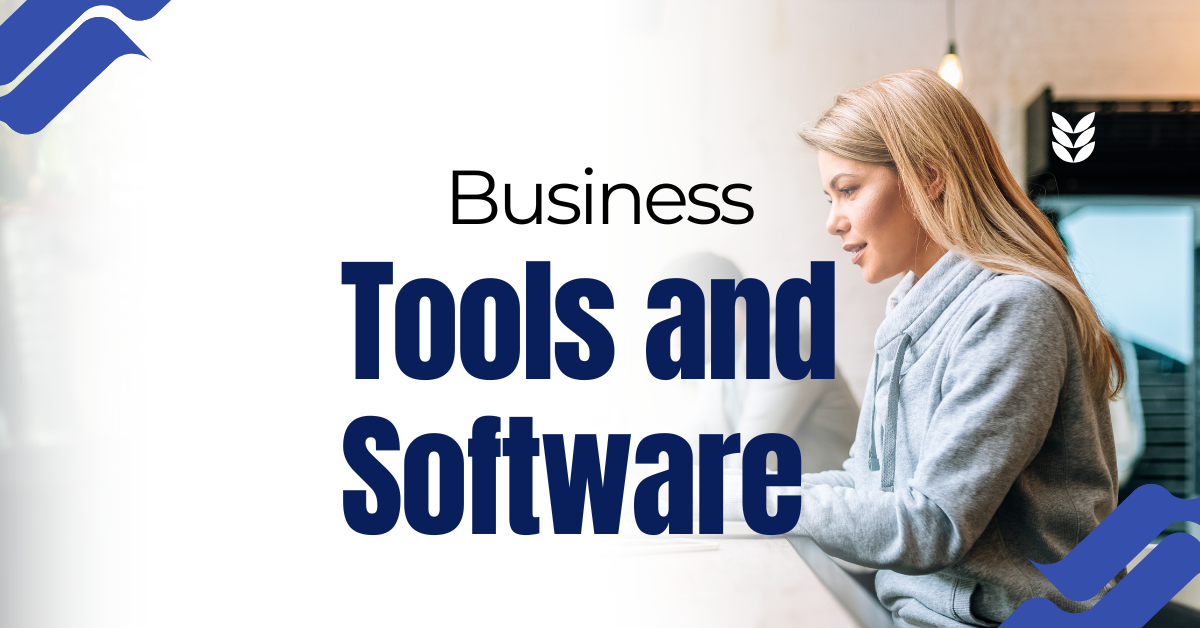In today’s fast-paced business landscape, staying ahead of the curve is crucial for small enterprises looking to thrive.
Australia has a wealth of innovative tech solutions explicitly designed to enhance business efficiency and streamline operations. From intuitive project management software to cutting-edge communication platforms, the best tech for small businesses is now more accessible than ever.
This post will delve into Australia’s top tech tools, empowering you with the knowledge to harness small business technology and drive growth. Join us as we explore how these Australian tech solutions can transform your business into a more agile, efficient, and competitive powerhouse.
Exploring Best Tech for Small Businesses
The landscape of small business technology is constantly evolving, offering innovative solutions to age-old challenges. Let’s dive into the benefits, essential tools, and strategies for overcoming adoption hurdles.
Benefits of Technology Integration
Integrating technology into small businesses can lead to transformative improvements across various aspects of operations. By leveraging the right tools, companies can streamline processes, reduce costs, and enhance productivity.
One of the primary advantages is increased efficiency. Automation of routine tasks frees up valuable time for strategic thinking and customer engagement. This shift allows businesses to focus on growth and innovation rather than getting bogged down in day-to-day minutiae.
Another significant benefit is enhanced communication. With collaborative platforms and cloud-based solutions, teams can work seamlessly regardless of location, fostering a more flexible and responsive work environment.
Lastly, technology integration often leads to better decision-making through data analytics and real-time reporting. This empowers business owners to make informed choices based on concrete insights rather than gut feelings.
Must-Have Tools for Efficiency
Certain tools stand out as essential for boosting efficiency and staying competitive in the realm of small business technology. These solutions address key operational areas and provide tangible benefits to organizations of all sizes.
-
Project Management Software: Tools like Trello or Asana help teams organize tasks, track progress, and collaborate effectively.
-
Cloud-based Accounting Systems: Platforms such as MYOB or Xero simplify financial management and offer real-time insights into business performance.
-
Customer Relationship Management (CRM) Software: Solutions like Salesforce or HubSpot enable better customer engagement and sales tracking.
Small businesses can create a solid foundation for growth and efficiency by implementing these core business tools. The key is choosing solutions that integrate well with existing systems and align with the company’s needs.
Overcoming Tech Adoption Challenges
While the benefits of technology adoption are clear, many small businesses face hurdles when implementing new solutions. Common challenges include budget constraints, resistance to change, and lack of technical expertise.
It’s crucial to develop a strategic approach to technology integration. To overcome these obstacles, assess your business needs thoroughly and prioritize areas where tech can make the most significant impact.
Invest in training and support to ensure your team is comfortable with new tools. This will not only ease the transition but also maximize the return on your technology investment.
Consider phased implementation to manage costs and minimize disruption. This approach allows for gradual adoption and refinement of processes as you go.
Australian Tech Solutions for Business
Australia’s thriving tech ecosystem offers a wealth of innovative solutions tailored to the unique needs of local businesses. Let’s explore some top players and their impact on the industry.

Top Local Tech Innovators
Australia’s tech landscape is brimming with innovative companies creating solutions specifically designed for small businesses. These local innovators understand the unique challenges faced by Australian enterprises and develop tools to address them effectively.
One standout is Canva, the Sydney-based graphic design platform that has revolutionized visual content creation for businesses of all sizes. Its user-friendly interface and vast template library make professional-quality design accessible to everyone.
Another notable player is Atlassian, known for its project management and collaboration tools, such as Jira and Confluence. These platforms have become indispensable for teams looking to streamline their workflows and improve productivity.
Culture Amp, a Melbourne-based company, offers employee engagement and performance management software. It helps businesses foster a positive work culture and drive growth through their people.
Custom Solutions for Unique Needs
While off-the-shelf software can address many business needs, a more tailored approach is sometimes necessary. Australian tech companies are rising to the challenge, offering customizable solutions that cater to specific industry requirements.
Many local developers specialize in creating bespoke software that integrates seamlessly with existing systems. This approach allows businesses to maintain their unique processes while benefiting from enhanced efficiency and automation.
Custom solutions can be particularly valuable for industries with specific compliance requirements or unique operational challenges. By working closely with tech partners, businesses can ensure their software aligns perfectly with their needs and goals.
Considering the costs and benefits of custom solutions against ready-made alternatives is essential. While customization offers greater flexibility, it often comes with a higher price tag and longer implementation time.
Success Stories from Australian Businesses
The impact of Australian tech solutions on local businesses is best illustrated through real-world success stories. These examples showcase how the rilogy can drive growth, improve efficiency, and transform operations.
“Implementing Xero completely changed how we manage our finances. We now have real-time insights into our cash flow and can make informed decisions quickly,” shares Sarah, owner of a boutique marketing agency in Melbourne.
A Sydney-based e-commerce startup credits its rapid growth to adopting local inventory management software. The system helped them optimize stock levels and fulfill orders more efficiently, improving customer satisfaction and increasing sales.
• 78% of surveyed businesses reported improved productivity after adopting Australian-made project management tools
• 65% saw an increase in customer satisfaction after implementing local CRM solutions
• 92% of companies using Australian accounting software reported better financial visibility and control
Small Business Technology Trends
Staying abreast of emerging technologies and trends is crucial for small businesses seeking a competitive edge. Let’s explore some of the key developments shaping the future of business technology.
Emerging Technologies to Watch
The tech landscape is constantly evolving, with new innovations emerging that have the potential to revolutionize small businesses’ operations. Staying informed about these trends can help companies prepare for the future and identify opportunities for growth.
Artificial Intelligence (AI) and Machine Learning are becoming increasingly accessible to small businesses. These technologies can automate complex tasks, provide predictive analytics, and enhance customer service through chatbots and personalized recommendations.
Internet of Things (IoT) devices are another area of rapid development. From intelligent sensors that monitor inventory to connected equipment that predicts maintenance needs, IoT can provide valuable data and improve operational efficiency.
While often associated with cryptocurrencies, blockchain technology has broader applications for small businesses. It can enhance transaction security, improve supply chain transparency, and streamline contract management.
Data-Driven Decision Making
The ability to collect, analyze, and act on data has become a critical competitive advantage for small businesses. Data-driven decision making allows companies to optimize operations, understand customer behavior, and identify new opportunities.
Key benefits of data-driven decision making include:
• Improved accuracy in forecasting and planning
• Enhanced customer targeting and personalization
• Identification of inefficiencies and cost-saving opportunities
• Better risk management and fraud detection
To implement data-driven strategies, businesses should:
-
Identify key performance indicators (KPIs) aligned with business goals
-
Invest in tools for data collection and analysis
-
Train staff on data interpretation and application
-
Regularly review and adjust strategies based on insights
Enhancing Customer Experience with Tech
Technology plays a crucial role in shaping customer experiences, and small businesses that leverage it effectively can significantly improve satisfaction and loyalty. From personalized marketing to seamless omnichannel interactions, tech solutions can elevate every touchpoint of the customer journey.
One key trend is using CRM systems integrated with marketing automation tools. This combination allows businesses to create highly targeted campaigns and provide personalized service based on customer data and behavior.
Mobile-first strategies are becoming increasingly important as more consumers rely on smartphones for shopping and information gathering. Optimizing your website and services for mobile devices is no longer optional—it’s essential.
AI-powered chatbots and virtual assistants are transforming customer service. They provide instant responses to queries and free up human agents to handle more complex issues. This technology can significantly improve response times and customer satisfaction.
Top Tech Tools Australia Recommends
Australian businesses can access various technology solutions to boost productivity, streamline finances, and enhance marketing efforts. Here’s a look at some of the most highly recommended tools across different business functions.
Productivity and Collaboration Tools
Productivity and collaboration tools are essential for modern businesses, enabling teams to work efficiently regardless of location. Australian companies have embraced several standout solutions that cater to various needs and work styles.
Microsoft Teams has become a go-to platform for many businesses. It offers a comprehensive suite of communication and collaboration features, and its integration with other Microsoft products makes it particularly valuable for companies already using Office 365.
Trello remains a popular choice for project management due to its intuitive interface and versatility. Its visual board system allows teams to track progress and manage tasks across different projects easily.
Slack is another widely adopted tool praised for streamlining communication and reducing email overload. Its channel-based messaging system and extensive integration capabilities make it a powerful hub for team collaboration.
Financial Management Solutions
Effective financial management is crucial for the success of any small business. Australian companies have several excellent options for accounting and financial software tailored to local tax regulations and business practices.
MYOB, an Australian-born company, leads the pack with its user-friendly interface and comprehensive features. It offers real-time bank feeds, invoicing, payroll, and reporting capabilities that simplify financial management for small businesses.

Marketing and Sales Automation Tools
Marketing and sales automation tools can significantly enhance a small business’s ability to reach and engage customers effectively. Several Australian-recommended solutions stand out in this category.
HubSpot offers a comprehensive suite of marketing, sales, and customer service tools. Its free CRM and affordable marketing automation features make it an attractive option for small businesses looking to scale their efforts.
Campaign Monitor, an Australian company, provides powerful automation and personalization features for email marketing. Its drag-and-drop email builder and analytics tools make it easy for businesses to create and optimize email campaigns.
Canva, mentioned earlier, deserves another nod here for simplifying graphic design for marketing materials. Its extensive template library and user-friendly interface enable businesses to create professional-looking content quickly and affordably.
Achieving Business Efficiency with Technology
Leveraging technology effectively can lead to significant improvements in business efficiency. Let’s explore strategies for streamlining operations, measuring the impact of tech investments, and fostering a culture of continuous improvement.
Streamlining Operations and Processes
Streamlining operations through technology is a key strategy for enhancing business efficiency. Companies can significantly improve productivity and reduce costs by identifying and addressing bottlenecks.
Start by mapping out your current processes and identifying areas where technology could have the most impact. Common areas for improvement include:
• Customer service automation
• Inventory management systems
• Automated billing and invoicing
• Digital document management
Implementing cloud-based solutions can improve accessibility and collaboration, allowing teams to work more efficiently from anywhere. Look for tools that integrate well with your existing systems to create a seamless workflow.
Remember that successful streamlining often requires a combination of technology and process redesign. Be prepared to adjust your workflows to fully leverage the benefits of new tools and systems.
Measuring ROI on Tech Investments
Measuring the return on investment (ROI) for technology implementations is crucial for ensuring that your tech spending aligns with business goals. This process helps justify investments and guides future decision-making.
To effectively measure ROI:
-
Set clear objectives and KPIs before implementation
-
Track both quantitative metrics (e.g., time saved, cost reduction) and qualitative improvements (e.g., employee satisfaction, customer feedback)
-
Use analytics tools to gather data on usage and impact
-
Regularly review and analyze the results against your initial goals
Consider both direct financial returns and indirect benefits such as improved customer satisfaction or enhanced competitive positioning. These factors contribute to the overall value of your tech investments.
Be patient—some technologies may take time to show their full value. Establish a timeline for evaluation that allows for proper implementation and adoption.
Continuous Improvement and Learning
Adopting a mindset of continuous improvement is essential for maximizing the benefits of technology in your business. This approach involves regularly assessing your tech stack, staying informed about new developments, and fostering a learning culture within your organization.
Encourage feedback from employees who use the technology daily. They often have valuable insights into how tools can be better utilized or where improvements are needed.
Invest in ongoing training and development to ensure your team can fully leverage the capabilities of your tech tools. This might include:
• Regular workshops or webinars
• Access to online learning resources
• Peer-to-peer knowledge sharing sessions
Stay connected with the tech community through industry events, forums, and partnerships with local innovation hubs. This network can provide valuable insights into emerging trends and best practices.
Remember that technology is constantly evolving. Be prepared to reassess and update your tech stack periodically to ensure you always use the most effective tools for your business needs.




